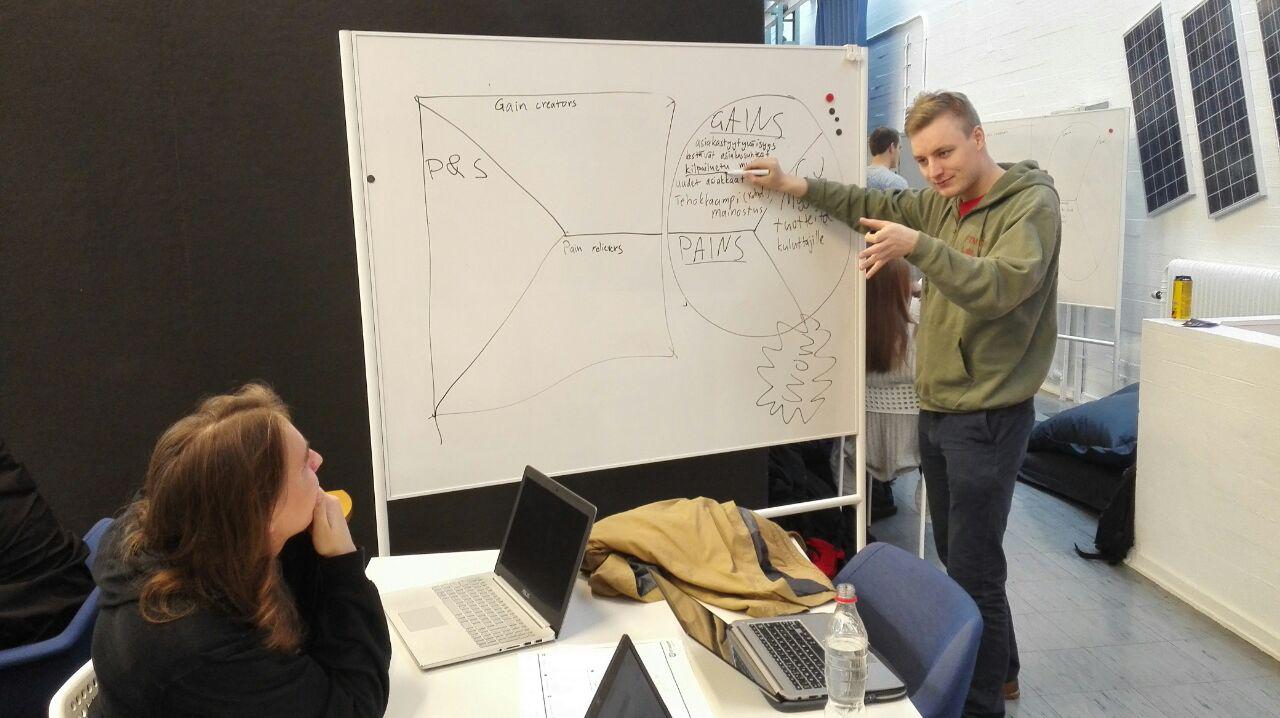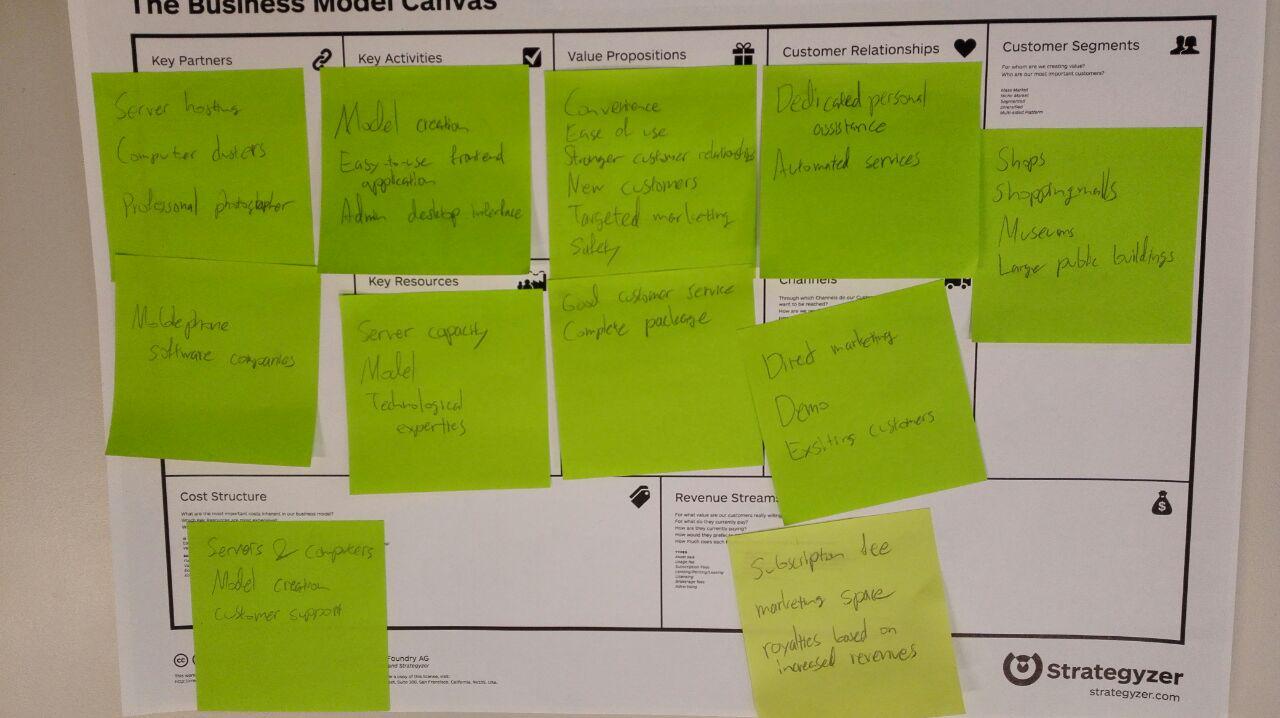Introduction
For outdoor use GPS (Global Positioning System) has established itself as a standard for locating objects and people. Unfortunately indoors the GPS does not often work and the accuracy is not enough for many applications. There are many alternative methods for indoor navigation that are based on different technologies such as Wi-Fi station triangulation or fingerprint locating or observing Earth's magnetic field. However, the lack of unified wireless infrastructure and standardisation interferes suitability of these technologies.
Rapidly developing computing power of handheld devices enables new kinds of sophisticated solutions to locate users indoors. Technique called Structure from Motion (SFM) makes it possible to form 3D model based on photographs or video images taken from several different locations and directions. Profiling points are identified from the photographs and 3D point cloud can be formed. This is used to construct the 3-dimensional model. The location of the user can be computed by matching the details from a photograph on the user's mobile device to the 3d-model and then calculating the users position using simple projection.
Clear strength of the SFM technology when compared to other indoor positioning methods is that it works reliably, for example, using a standard smartphone camera. Both the formation of the model and utilization are possible with existing and affordable devices. Also, there is no need for separately installing expensive infrastructure in the space where indoor navigation is used.
The purpose of this project is to find out
- Is photograph based indoor positioning system a viable option?
- Can this technology achieve adequate accuracy with available consumer devices such as smartphone cameras?
- Who would be willing to pay for such service, and what kind of synergies it would have with advertising or in the context of mobile games?
- We are also investigating if a small-scale prototype is realistically achievable in the scope of this project.
Potential Customers and End users
We try to direct the main focus of the project for solving a mundane and practical problems related to indoor positioning. Then end-users would likely be ordinary consumers. All smartphones and new smart devices in the future will be powerful enough to run the indoor positioning application. The only requirements are a camera and internet connectivity. This means that the potential customer base comprises all users of smart devices.
One of the main customer groups are shopping centers and major hypermarket-class shops, which could take advantage of indoor positioning to provide a better customer experience, guidance service and presentation of advertisements. In addition to shops other large public places, such as musea might be interested in the possibilities for increasing the AR-elements to improve the customer experience. Elements in augmented reality could be signs, but also various commercials and reconstructions to provide customers with much more immersive museum experience.
In addition to customers that utilize augmented reality it could also be used to quickly create 3D-models of limited size interior of buildings, for example, the virtual presentation of apartments. In this case, the advantage would be particularly affordability and ease of use, because the modeling is based entirely on the existing technology.
Scope of the project
We will interview managers of retail stores and customers customers to find out, what kind of problems they have encountered and could more efficient positioning system ease these pains. Based on the analysis we seek to create a demo based on SFM technology and present a business model.
| Time usage | person hours |
| Lectures and Presentations | 150 |
| Meetings | 150 |
| Information Collecting | 200 |
| Interviews | 200 |
| Programming, Modelling and Testing | 150 |
| Documenting and Reporting | 50 |
| Blog | 100 |
| Total | 1000 |
Schedule and Milestones
The project schedule is set to according scheduling based on the course. We have set deadlines for the various sub-regions as follows
| Week | Tasks |
| 42 | Understanding the theoretical bases of the subject |
| 42 | Booking of interviews (e-mail) |
| 43 | Study of customers' interest and interviews of |
| 44 | Presentation 3 - presentation Guest interests and needs, |
| 45 | The interviews were analyzed and the final decision about the application of |
| 46 | Presentation 4 - presentation of business potential, |
| 47 | Model ready |
| 48 | Paragraph 5 - General Practice |
Schedule is monitored in weekly meetings, which are held on Thursdays at 10 o'clock.
Data Collecting
The collection of data is divided into two main phases: research of the theoretical basis based on the articles and fieldwork in the form of interviews. In the first phase, the objective is to provide a comprehensive overview of the current state of technology, the opportunities and challenges as well as create a realistic idea of the level of complexity for the produced demo. Articles form the basis of the concepts of the interviews. The interviews will be carried out either by phone or physically on site and, depending on the location and the interviewee's schedule. The purpose of the interviews is to identify the potential customer interest in the concept and at the same time to get a new perspective for the development of the concept. The final concept and demo is created on the basis of issues and areas of development collected in the interviews .
Risks
We have mapped the risks related to the project and to prepare for them as follows
| Risks related to the project | The level of risk | Measures to prevent |
| Complexity of the prototype | Large | Detection of its feasibility early enough. |
| Data loss | Medium | Version Management / Backup |
| Male labor force reduction | Small | Is noted when planning schedules |
| Failure of the scheduling | Medium-sized | Sub-project Monitoring the progress of our weekly meetings |
| The interviewees can not be found | Small | In due time started searching for the interviewees a large number of the interviewees |
| The interviews are not useful | Small | Carefully prepared questions, in order to obtain answers to the problems being |
| Time management | Small | The division of responsibilities, scheduling and deadlines, a weekly focus of evaluation |
Responsibilities
Our group consists of seven people, whom we have shared responsibilities roughly as follows.
| Aapo | Interviews, photographing, stand |
| Markus | Interviews, documenting, presentations |
| Jaan | Blog, modelling, testing |
| Misamatti | Modelling, data collection, leading the team |
| Antti | Analysis from the Interviews, Interviewing |
| Lauri | Data collection, interviews |
| Juhani | Data collection, modelling |

